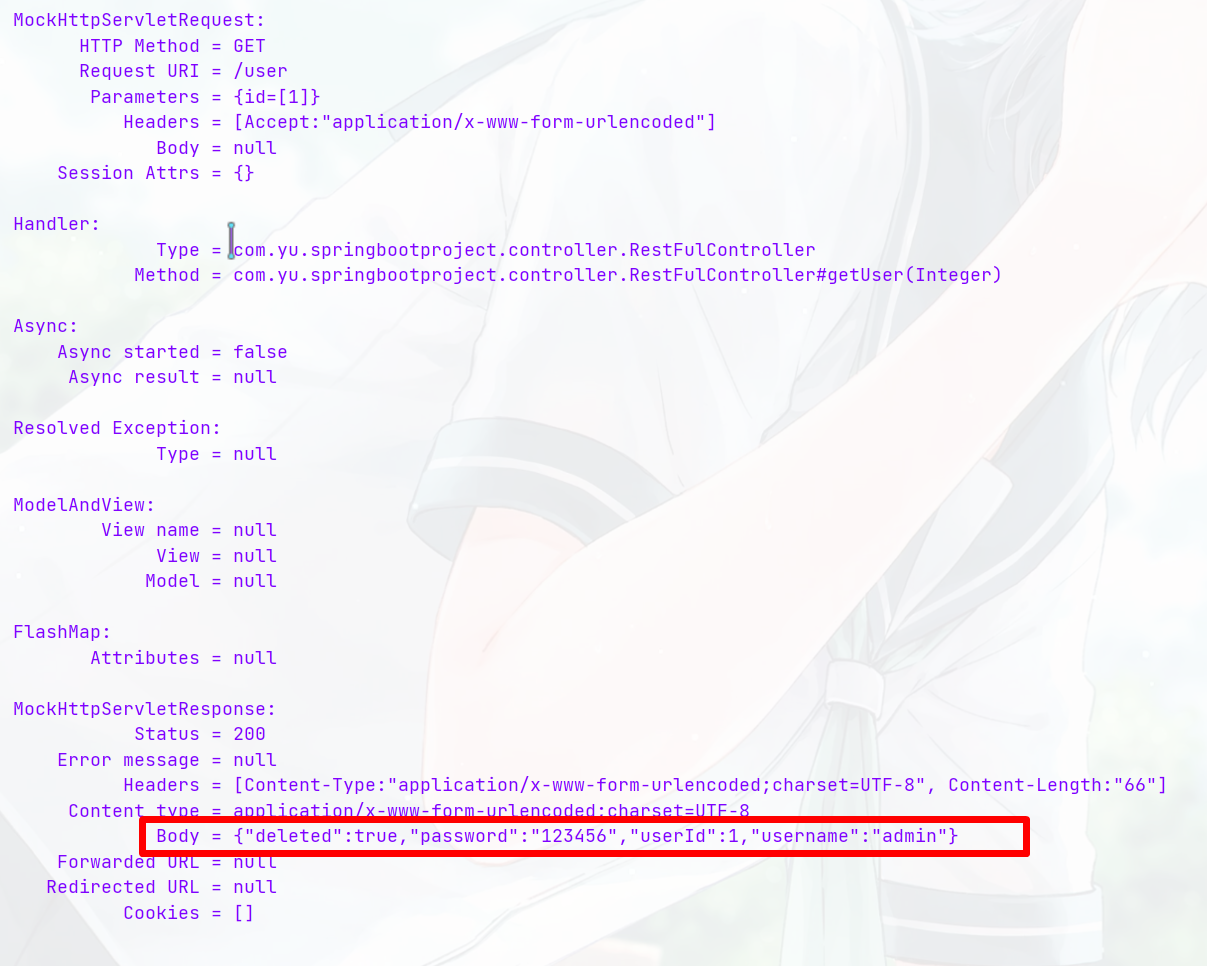2.16、RestFul风格
SpringBoot因为本身就继承了SpringMVC,所以使用RestFul和SpringMVC一样。
RestFul风格是一种当前比较流行的互联网软件架构模式,它利用HTTP 协议的特性,规定了一套资源获取的方式,,它可以使软件更简洁,更有层次,易于实现缓存等机制。
在 web开发中,Rest使用HTTP协议连接器来标识对资源的操作,用 HTTP GET标识获取查询资源,HTTP POST标识创建资源,HTTP PUT标识修改资源,HTTP DELETE标识删除资源,这样就构成了 Rest风格数据处理的核心,它的增删改查在在Controller中通过四种注解来区分(也可以用@RequestMapping的属性method):
| 资源操作 | 对应注解 | HTTP 请求方式 |
|---|---|---|
| 获取资源(SELECT) | @GetMapping、 @RequestMapping(value = “”,method = RequestMethod.GET) |
GET |
| 新增资源(INSERT) | @PostMapping @RequestMapping(value = “”,method = RequestMethod.POST) |
POST |
| 修改资源(UPDATE) | @PutMapping @RequestMapping(value = “”,method = RequestMethod.PUT) |
PUT |
| 删除资源(DELETE) | @DeleteMapping @RequestMapping(value = “”,method = RequestMethod.DELETE) |
DELETE |
-
传统的资源操作是通过不同的参数来实现的
@Controller public class RestfulController { @RequestMapping("/summation") public String summation(int num1, int num2, Model model){ int result = num1+num2; model.addAttribute("result","和为:"+result); return ""; } }http://localhost:8080/summation?num1=15&num2=3
-
RestFul可以用相同的路径,通过修改提交方式达到不同请求的结果:
访问路径都为http://localhost:8080/user,但根据不同的访问方式实现了增删改查四种操作
@RestController public class RestFulController { @Autowired private UserService userService; //get对应查 @GetMapping("/user") public String getUser(@PathVariable("id") int id){ User user = userService.selectByPrimaryKey(id); return JSON.toJSONString(user); } //post对应新增 @PostMapping("/user") public int postUser(@RequestBody User user){ return userService.insert(user); } //put对应修改 @PutMapping("/user") public int putUser(@RequestBody User user){ return userService.updateByPrimaryKeySelective(user); } //delete对应删除 @DeleteMapping("/user") public int deleteUser(int id){ return userService.deleteByPrimaryKey(id); } } -
使用MockMvc对其进行测试
@SpringBootTest @AutoConfigureMockMvc public class RestFulControllerTest { @Autowired private MockMvc mockMvc; //查 @Test public void getTest() throws Exception { MockHttpServletRequestBuilder builder = get("/user") .accept(MediaType.APPLICATION_FORM_URLENCODED) .param("id","1"); mockMvc.perform(builder) .andDo(print()) .andReturn(); } //增 @Test public void postTest() throws Exception { User user = new User(null,"mockMvc","123456",true); String jsonString = JSON.toJSONString(user); MockHttpServletRequestBuilder builder = post("/user") .accept(MediaType.APPLICATION_JSON) .contentType(MediaType.APPLICATION_JSON) .content(jsonString); MvcResult mvcResult = mockMvc.perform(builder) .andDo(print()) .andReturn(); System.out.println("输出 " + mvcResult.getResponse().getContentAsString()); } //改 @Test public void putTest() throws Exception { User user = new User(3,"restful","123456",true); String jsonString = JSON.toJSONString(user); MockHttpServletRequestBuilder builder = put("/user") .accept(MediaType.APPLICATION_JSON) .contentType(MediaType.APPLICATION_JSON) .content(jsonString); MvcResult mvcResult = mockMvc.perform(builder) .andDo(print()) .andReturn(); System.out.println("输出 " + mvcResult.getResponse().getContentAsString()); } //删除 @Test public void deleteTest() throws Exception { MockHttpServletRequestBuilder builder = delete("/user") .accept(MediaType.APPLICATION_JSON) .param("id","9"); MvcResult mvcResult = mockMvc.perform(builder) .andDo(print()) .andReturn(); System.out.println("输出 " + mvcResult.getResponse().getContentAsString()); } }
需要注意几个注解:
- @RequestParam(value = “绑定值的名称”,required = 是否必须绑定):用在参数前,用来处理简单类型的绑定,原理是通过Request.getParameter() 获取参数值
- @RequestBody:用在参数前,主要用来处理JSON格式的数据映射
- @PathVariable:如果RestFul风格的路径中有 {id}这种的,可以用来与参数进行映射